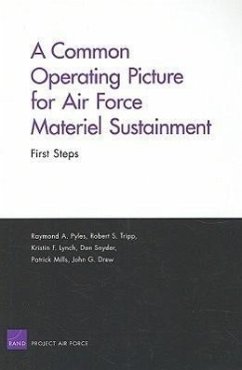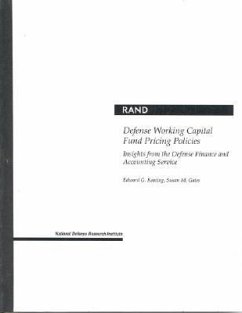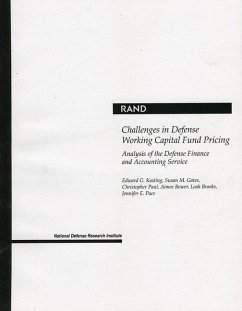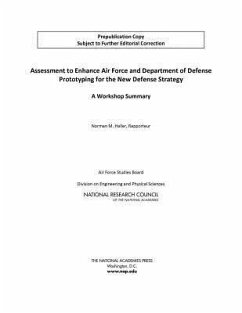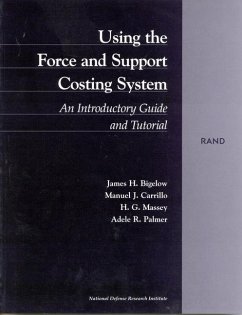
An Analysis of the Air Force Working Capital Fund's Performance and the Pricing Strategy of the Materiel Support Division
Versandkostenfrei!
Versandfertig in über 4 Wochen
15,99 €
inkl. MwSt.
Weitere Ausgaben:

PAYBACK Punkte
8 °P sammeln!
The Air Force Working Capital Fund (AFWCF), a revolving fund established to create a more business-like environment between the Air Force and its customers, is comprised of several divisions providing depot level repairs, supplies and inventory, information technology solutions and transportation services to military customers. Since its establishment, the AFWCF has been the source of much criticism due to its inability to meet its primary goal of operating on a break-even basis. Ideally, the Fund will generate enough revenue from the sale of goods or services to cover its expenses and break-e...
The Air Force Working Capital Fund (AFWCF), a revolving fund established to create a more business-like environment between the Air Force and its customers, is comprised of several divisions providing depot level repairs, supplies and inventory, information technology solutions and transportation services to military customers. Since its establishment, the AFWCF has been the source of much criticism due to its inability to meet its primary goal of operating on a break-even basis. Ideally, the Fund will generate enough revenue from the sale of goods or services to cover its expenses and break-even. Instead, there is either a surplus that must be reintroduced into the AFWCF or, as most often the case, a deficit occurs. Due to regulatory requirements, the Fund must recoup these lost monies in a subsequent year. This profoundly affects the ability to accurately build the budget and reach the break-even point. This research analyzes the past performance of the AFWCF and identifies which areas are key drivers in preventing the AFWCF from meeting this goal. Lastly, the pricing strategy of the Materiel Support Division was evaluated based on commercial best practices to determine if its pricing schema lends itself to meeting the goals of the AFWCF. This work has been selected by scholars as being culturally important, and is part of the knowledge base of civilization as we know it. This work was reproduced from the original artifact, and remains as true to the original work as possible. Therefore, you will see the original copyright references, library stamps (as most of these works have been housed in our most important libraries around the world), and other notations in the work. This work is in the public domain in the United States of America, and possibly other nations. Within the United States, you may freely copy and distribute this work, as no entity (individual or corporate) has a copyright on the body of the work. As a reproduction of a historical artifact, this work may contain missing or blurred pages, poor pictures, errant marks, etc. Scholars believe, and we concur, that this work is important enough to be preserved, reproduced, and made generally available to the public. We appreciate your support of the preservation process, and thank you for being an important part of keeping this knowledge alive and relevant.



